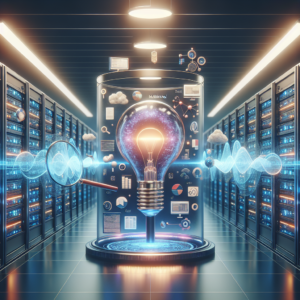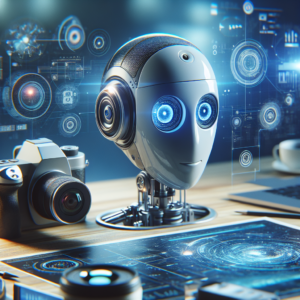What do you see when you look ahead to the future of technology? For many, machine learning (ML) stands out as a pivotal component of that future. I’ve been fascinated by how ML is evolving and reshaping our world. It’s not just a buzzword; it’s a dynamic field with tremendous potential that promises to bring transformative changes across various industries.
Understanding Machine Learning
Machine learning is a subset of artificial intelligence (AI) that allows systems to learn from data, identify patterns, and make decisions with minimal human intervention. I find it remarkable how algorithms can “learn” from previous experiences and improve in accuracy over time. It’s like teaching a child; the more examples they see, the better they become at recognizing patterns and making predictions.
Types of Machine Learning
I’ve learned that machine learning can be categorized into three main types: supervised learning, unsupervised learning, and reinforcement learning. Each type has its unique applications and use cases.
Supervised Learning
In supervised learning, the model is trained on labeled data, meaning that the input data is paired with the correct output. I find this approach fascinating because it closely mimics the way we learn in real life. For instance, if I were teaching a child to recognize fruits, I would show them pictures of apples, bananas, and oranges, labeling each one so they can associate the visual with the name.
| Type | Description | Example |
|---|---|---|
| Supervised | Uses labeled data for training | Email classification (spam vs. not spam) |
| Unsupervised | Works with unlabeled data to find patterns | Customer segmentation in marketing |
| Reinforcement | Learns from feedback by taking actions in an environment | Game-playing AI (like AlphaGo) |
Unsupervised Learning
Unsupervised learning deals with data that is not labeled. This concept intrigues me because it allows algorithms to discover hidden patterns or intrinsic structures in the data. It’s like giving a child a box of various toys without labels and allowing them to sort and classify them based on similarities they observe.
Reinforcement Learning
Reinforcement learning, however, takes a different approach. The system learns through trial and error, receiving rewards or penalties based on the actions it takes. It’s fascinating to think of it like a game where every decision affects future outcomes. For instance, a robot navigating a maze learns the best route through positive reinforcement for correct paths and penalties for wrong turns.
Current Applications of Machine Learning
Machine learning isn’t just a theory; it’s being applied in countless fields today. I get excited thinking about how it’s reshaping industries and enhancing our daily lives.
Healthcare
In healthcare, I’ve seen how machine learning algorithms analyze vast amounts of medical data to aid in diagnostics, predict disease outbreaks, and personalize treatment plans. This capability is redefining patient care, making it more efficient and tailored to individual needs. For instance, ML models can analyze medical images to identify anomalies much faster than a human doctor.
Finance
In the financial sector, machine learning is transforming risk assessment, fraud detection, and algorithmic trading. I find it amazing how these algorithms can analyze spending patterns and flag unusual transactions in real time, protecting consumers from fraud. This application improves trust in financial systems and enhances security measures.
Automotive Industry
The automotive industry is also undergoing a revolution thanks to machine learning, particularly with the advent of self-driving cars. I am fascinated by how vehicles can analyze their surroundings using cameras and sensors, learning and adapting their driving behaviors accordingly. Companies like Tesla are at the forefront, using ML to develop safer and more efficient driving experiences.
Future Trends in Machine Learning
Looking ahead, I can’t help but ponder the future trends that could define the next chapter in machine learning.
Increased Automation
One trend that stands out to me is increased automation. As machine learning algorithms become more advanced, there’s a clear trajectory towards automating more complex tasks across industries. We might see machines performing intricate surgeries or managing entire supply chains with minimal human oversight.
Explainable AI
Another important aspect is the push for explainable AI. As we lean into machine learning, it’s crucial for systems to provide transparency regarding their decisions. I find it vital that we understand how algorithms arrive at conclusions, especially in areas like criminal justice or healthcare, where the stakes are high. Explainable AI would help build trust in these systems.
Ethical Considerations
Alongside innovation, ethical considerations are increasingly resonating within the realm of machine learning. I believe it’s important that as we push forward, we actively address issues like bias in algorithms and ensure data privacy. Responsible AI development is paramount to creating fair and beneficial systems for all.
| Trend | Description | Impact |
|---|---|---|
| Increased Automation | Automating complex tasks across industries | Efficiency and reduced human workload |
| Explainable AI | Transparency in how algorithms make decisions | Trust and accountability in AI systems |
| Ethical Considerations | Addressing bias and data privacy issues | Fairness and responsible innovation |
Challenges in Machine Learning
Despite all the excitement surrounding machine learning, I’d be remiss not to mention the challenges that come with it. Understanding these hurdles can help in navigating the landscape more effectively.
Data Quality and Quantity
One significant challenge is the quality and quantity of data. Personally, I’ve learned that the effectiveness of machine learning models heavily relies on the data they are trained on. Poor-quality data can lead to inaccurate predictions. Therefore, it becomes imperative to ensure high-quality, diverse datasets for training.
Technical Limitations
There are also technical limitations to consider, such as computational power and the need for continual advancements in algorithms. As models grow in complexity, the demand for processing capabilities increases. I know that keeping up with these requirements can be a significant hurdle for many organizations.
Resistance to Change
Finally, there’s often resistance to change within companies and industries. The fear of the unknown can be a barrier to adopting new technologies, including machine learning. As I reflect on this, I see the importance of fostering a culture of innovation to embrace change and harness the full potential of machine learning.
Conclusion: Embracing the Future of Machine Learning
As I ponder the future of machine learning, it’s clear to me that its impact will be profound. From improving healthcare outcomes to revolutionizing transportation, the potential applications are boundless. It’s exciting to think about how, as we embrace these advancements, we’ll continue to unravel the complexities of AI and its capabilities.
I also recognize the need for responsible development and ethical considerations. We must ensure that as we harness the power of machine learning, we do so in a way that is fair, transparent, and beneficial for all. The journey ahead is filled with promise, and I’m looking forward to seeing how machine learning will continue to evolve and shape our world.
I believe it’s a time for optimism. As each development brings us closer to a future enriched by technology, I’m inspired to be part of the ongoing conversation, contributing to the ethical and innovative practices that will guide machine learning into a new era. Let’s keep the dialogue going and share in the excitement of what lies ahead!






